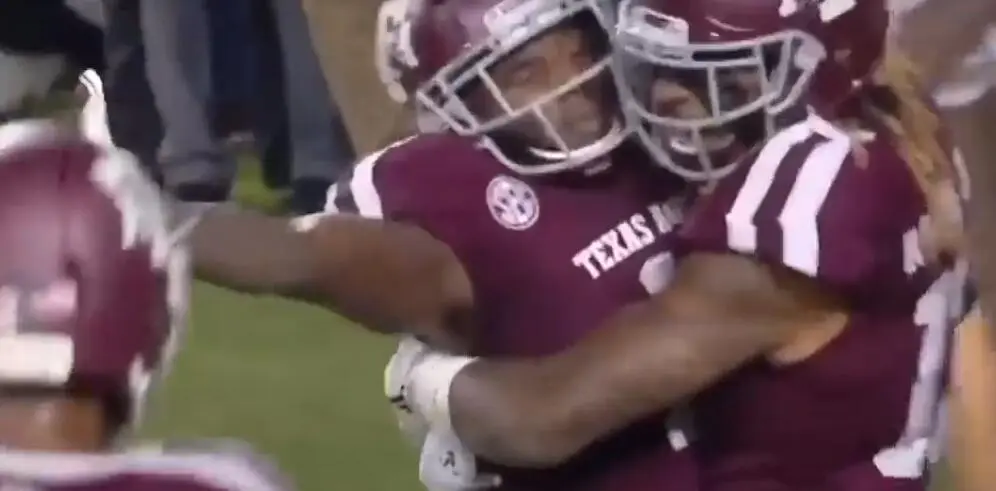Physical Address
304 North Cardinal St.
Dorchester Center, MA 02124
Physical Address
304 North Cardinal St.
Dorchester Center, MA 02124

Significant differences exist between the college version of a sport and its professional counterpart. It always surprises me how much of a difference in rules for the same sport. It mostly comes from leagues in other countries as opposed to our version of the sport. There is a big difference in the game between College Football and the NFL, specifically in overtime, and we will break it down.
Sudden death in hockey is not only stressful but incredibly exciting. In the NFL, overtime was decided by sudden death until this previous season, when the rule changed. This rule came after the infamous Kansas City Chiefs’ win over the Buffalo Bills in the AFC divisional playoffs. Now both teams get a chance to possess the ball.
College football, on the other hand, is very different. There is no sudden death, and the rules are slightly different. When a college football game goes overtime, both teams get a shot with possession of the ball. The game plays a fifth quarter where the team with the most points is declared the winner at the end of the quarter.
Unlike other sports, college football spices it up to try and get a winner. While the first overtime is just another quarter of the game, the game vastly changes after the first overtime. The reason for this is to bring a quicker end to overtime because of the 74-72 Texas A&M win over LSU that needed seven overtimes.
After the start of the second period, teams must attempt two-point conversations after each scoring touchdown. If the game continues into third overtime by some miracle, each team will begin to run two-point conversions instead of offensive possessions. This is all designed to end the game faster with a clear winner.
If both teams were tied at the end of a College Football game, the game would end in a tie. This changed after pressure from players, programs, and fans, who wanted a clear winner for all games. This was the result of tie games until a rule change in 1996.
That is when the first overtime rules came into play. In the first iteration, each team got the ball on the opponent’s 25-yard line and kept it until they failed to score a touchdown. Teams would alternate possession until there was a winner, which happened until 2019 when the overtime rules were changed. This is when the overtime shootout started.
In 2019, the NCAA added the two-point conversation attempts in the third overtime, meaning a two-point attempt was to be made for each touchdown scored. Then, after five overtimes, teams would begin the two-point shootout. In 2021, the rules changed again, starting the shootout in the third overtime.
In modern college football, the game cannot end in a tie. The last game in college football to end in a tie was in 1995 between Wisconsin and Illinois. The following season, the rules were changed to declare a team victorious.
If teams can not play a game, it could be declared a forfeit, or the game can be canceled outright. There can not be a tie in college football, and there have been no indications that the NCAA or other governing bodies will change this outcome.
Using college football in a grand view, the longest overtime game was in a 1998 game between Bethune-Cookman and Virginia State. The game had eight overtime and ended with a score of 63-57.
The most notable game in college football history came between LSU and Texas A&M. This game holds the record for most overtimes in an FBS game. The game stretched into seven overtimes, so 11 quarters of football, almost three entire games. There were over 200 snaps in the game.
NFL overtime has been hotly debated for the last decade, the envy of most fans since they hated the sudden death format. Until this last season, NFL football games would end when one team scores.
So, if Team A had the ball to start the overtime and scored, Team B would not get a chance to possess the ball. This changed after a disappointing end to the Bills and Chiefs game this past postseason. Now both teams in NFL overtime will have a chance with the ball during the fourth quarter, usually resulting in a game-ending in the fifth quarter.
College Football is very different, with teams having normal overtime in the fourth quarter; both teams get possession of the ball. It is in the second and third overtimes that things get weird. In the second overtime, after a touchdown is scored, the teams must go for two-point conversations after a touchdown.
The third quarter starts with a two-point shootout, where each team can only go for two-point shootouts until there is a winner. This part is pretty much the same as the NFL.
Overall, college football has been more progressive than the NFL in selecting winners. The NFL stopped letting games end in 1974 when they introduced the sudden death overtime rule. College football ended ties in 1996; unlike the NFL, both teams had a chance with the ball instead of hoping the other team fails to convert.
College football with the two-point shootout is probably the most exciting way to end a football game, but I think we are all glad games don’t end in a tie, and the NFL finally changed from sudden death.